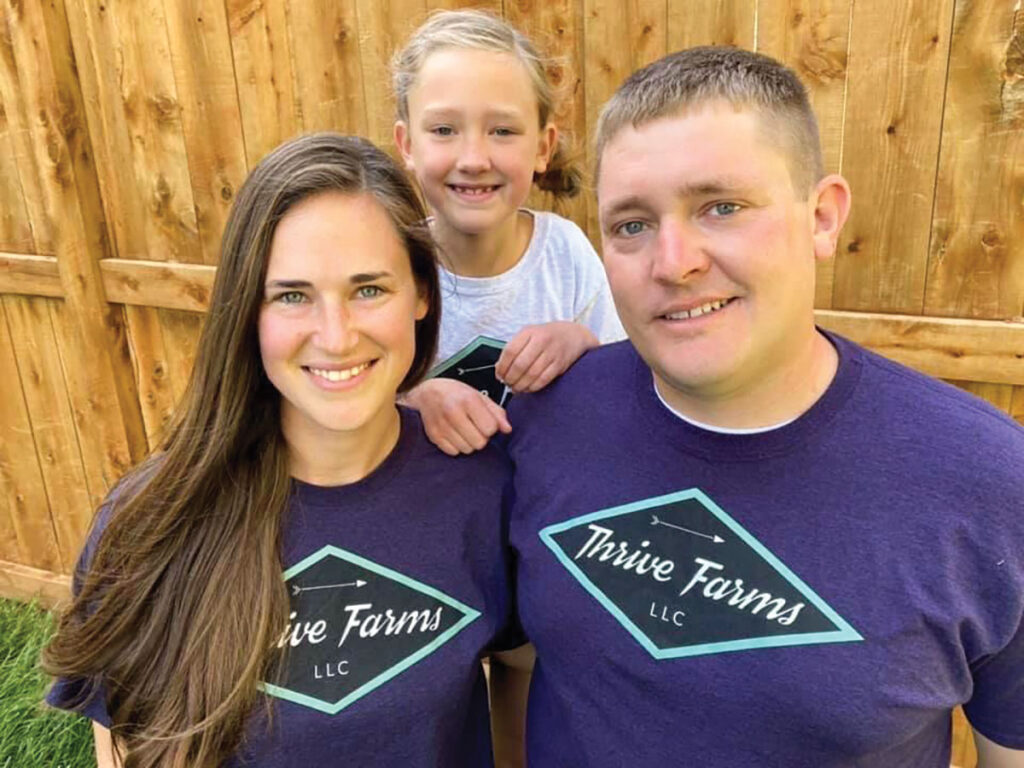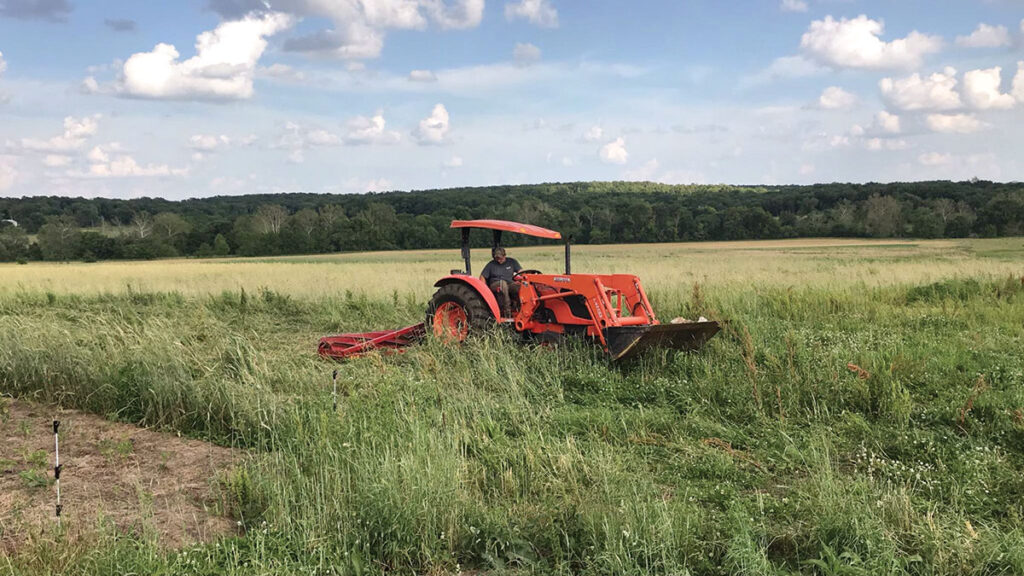
Thrive Farms and the Epp family work with their land, not against it
WEAUBLEAU, MO. – Brent and Jocelyn Epp come from farming backgrounds. Brent grew up row cropping soybean and corn, and grain-finishing cattle in Nebraska. Jocelyn with row crops and a cow/calf operation.
Now, the couple and their daughter Annie work on their family farm, Thrive Farms LLC, in Weaubleau, Mo., using regenerative agriculture principles to get the most out of their land and livestock while also improving the soil quality.
Jocelyn’s health was a primary motivator for her family to begin looking for a cleaner way to live and eat. During her childhood, organic and unprocessed foods were difficult to find, but necessary for her health.
“We started raising chicken, beef, and pork because we wanted to control what we eat and how it is raised. This is what we want and so we raise it,” said Brent.
While they were pursuing more healthy options, Brent and Jocelyn were drawn to regenerative agriculture with their crops and livestock. Regenerative ag follows the principle of working with the land rather than working against it.
Regenerative farms follow five principles: Limit chemical, physical, and biological disturbance; keep the soil covered; add diversity of plants and insects; keep a living root in the soil as long as possible; and integrate animals into the system
The main focus of regenerative ag is actually the soil rather than the plant being grown. This focus means changing out the crops being planted and alternating grazing with planting to create healthy soil.
“They say ‘healthy soil equals healthy plants equals healthy animals equals healthy people,” Brent said.
While Brent rotated crops during on his farm in Nebraska, he’s taking that principle a step further to rejuvenate the soil rather than just sustaining the soil.
“Most farmers are already aware of how a little bit of diversity can make a world of difference, but there’s a lot more to it than just that. You can only get so far by rotating corn and soybeans. You must integrate other species of plants to provide the right environment for diverse soil bacteria and microbes to flourish,” he explained.
To go beyond crop rotation, Brent always plants a cover crop in between cash crops on 80 acres of their 250-acre operation. This cover crop is intended to replenish the soil and is not harvested. Instead, Brent plants the corn or soybeans while the crop is still standing then uses a roller crimper to flatten and crimp the plant stalks to kill them. The cover crop not only replaces and unlocks nutrients in the soil but also keeps the weeds down while the crop grows up through the stalks.
The Epp family have seen some immediate benefits in their crops from using regenerative agriculture.
“For a soybean crop, we used to spray two or three applications of herbicide per year and now we’re down to one. So there’s financial benefit. Depending on what you’re concerned about, there’s also an environmental benefit,” said Brent.
Planting diverse species of crops also has the benefit of changing the environment of the soil, changing which weeds are likely to grow there.

“The first year we farmed here, we had an overgrowth of waterhemp in our soybeans and after the first year of growing cover crops, there just wasn’t any,” Brent said. “After growing cereal rye as a cover crop, there were some species of weeds that we didn’t see anymore, but as the environment changed in the soil, we saw new, different weeds start to grow.” Brent said.
While it has been a slow and difficult process, they are encouraged to see improvement. Because of the rocks/shallow soil and damage done by overgrazing and non-sustainable farming, it takes time for the soil to recover.
While the soil can be improved, the frequent lack of rain is a permanent issue. “
When the corn is trying to tassel or pollinate and we need a rain like once a week and sometimes we go five or six weeks without a rain,” says Brent.
Even though the crops have been slow to respond, the pastures and livestock have responded really well to regenerative ag.
By regularly moving the cattle and goat herds between pastures and letting the fields recover as much as possible before they’re grazed again, the pastures have grown more and better grass. “We’ve noticed in some dry seasons,” Brent said, “that our grass isn’t really burning up like it used to.”
Of the livestock, the goats, a Kiko-TexMaster cross, have had significant success with regenerative ag. Goats are naturally prone to major health issues, and regenerative ag has eliminated many of the health problems that plagued the Epp herd.
By rotating the herd between the pastures and focusing on keeping the soil and grass in good condition, the goats are no longer struggling with common health issues.
“We started out with a lot of foot rot issues and parasites that we don’t have much of anymore,” said Brent.
Their Cornish-cross flock also enjoy the benefits of regenerative ag. The chickens are kept in chicken tractors and rotated around a pasture to provide them a healthier environment. Daily rotation keeps the chickens healthy and maximizes soil health.
Their personal goals to eat healthier and care for their land have opened up various markets for them to sell their beef and poultry including a farmer’s market in Springfield and a meat delivery drop point in Kansas City.
From being able to eat healthier to seeing their livestock and soil thrive under proper care, the benefits of regenerative ag are easy to see for the Epp family. They’re hopeful that in the future, the crops will benefit more from their efforts and that the land will be in the best shape it can be.








